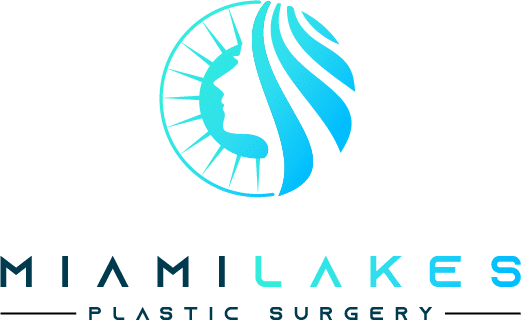Facelift in Miami
If you are looking for a procedure that could help you restore a younger appearance or you’re considering a full facial transformation, you should consider facelift Miami. There are many factors that influence visible aging on our faces. From atmospheric conditions, such as excessive sunlight, to stress and lifestyle, many factors can contribute to aging. A facelift procedure done expertly will rejuvenate your look and turn you into a youthful version of yourself.
Book A Free Consultation
Facelift Before and After Gallery
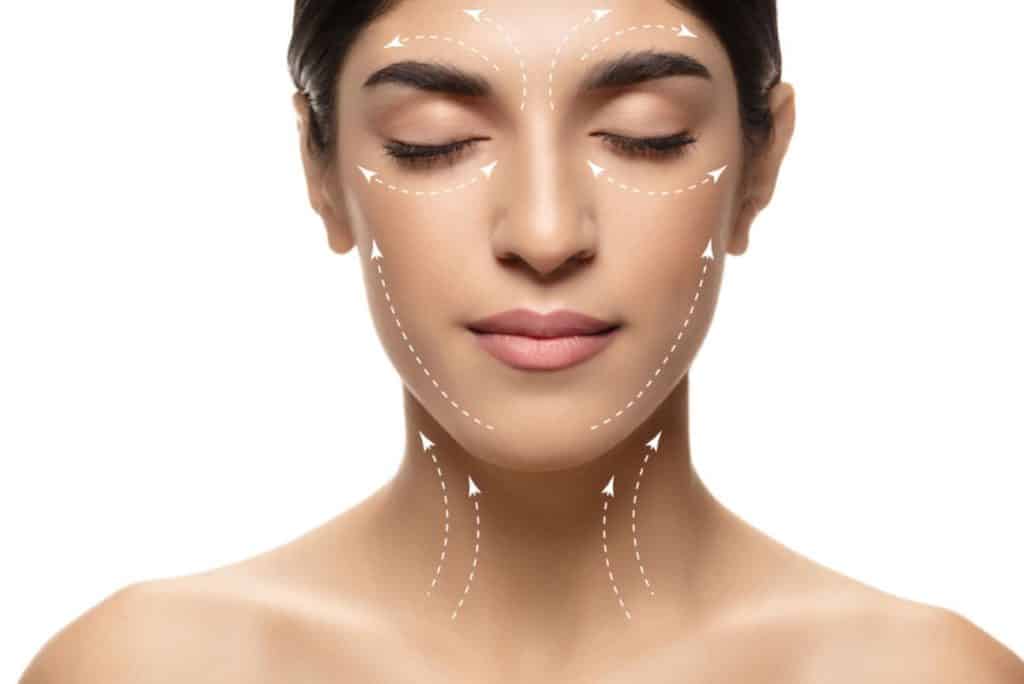
What is Facelift Surgery?
A facelift is a cosmetic procedure designed to address visible signs of aging in the face. It can result in a more youthful and refreshed appearance for the patient. The procedure is tailored to meet the individual needs of each patient, which may include lifting facial structures, removing excess skin, and rejuvenating the neck area.
During the surgery, the patient will be fully sedated and will not experience any discomfort. The surgeon will make small incisions to access and manipulate the underlying facial structures and muscles. The type of facelift performed may be a traditional or an endoscopic facelift.
Before undergoing a facelift, it is crucial to have a full understanding of the procedure and its potential risks and side effects. This includes discussing alternative treatments or procedures with your surgeon. It’s also important to have realistic expectations about the results of the surgery and how long it will take to achieve them.
Additionally, make sure to make an informed decision about the surgery and discuss any necessary lifestyle changes or modifications with your surgeon. Your surgeon will provide detailed information about the procedure during the initial consultation. Prepare yourself for a facelift by educating yourself and having open communication with your surgeon.
Why Should You Have a Facelift?
Facelift surgery can help to restore a youthful look, reduce signs of aging, and improve the overall appearance of the face. It is a procedure that has been proven to be highly effective in the following:
- Addressing wrinkles,
- Sagging skin,
- Jowls,
- And laxity in the neck area.
Facelifts are particularly beneficial for those who want to reduce the signs of aging, as well as those who want to achieve a more symmetrical and balanced facial structure. The procedure can be performed in various ways depending on the individual’s needs and goals for their appearance
Understanding the Factors That Affect the Condition of Your Skin
The appearance of our skin is not solely determined by age. Other factors such as sun exposure and cigarette use can also have a significant impact on the condition of our skin. In this article, we’ll delve into the various factors that can affect the appearance of your skin and explain how to combat them.
Exposure to UV rays is a major contributor to skin damage and premature aging. UV rays can break down the collagen in your skin and harm elastin, leading to a loss of elasticity and the development of wrinkles. To protect your skin from the harmful effects of UV rays, be sure to apply sunscreen and limit your exposure to direct sunlight.
Cigarette use can also have a damaging effect on the appearance of your skin. The chemicals and nicotine in cigarettes can cause the blood vessels in your skin to narrow, reducing the flow of oxygen and nutrients to your skin cells. The puckering of the lips while smoking can also worsen the appearance of wrinkles around the mouth. If you’re a smoker, quitting is the best way to protect your skin from further damage.
A poor diet can also have a negative impact on the appearance of your skin. Consuming too many processed carbohydrates and sugary foods can decrease collagen production in your skin, leading to inflammation. To maintain a healthy, youthful appearance, it’s important to eat a balanced diet rich in fruits, vegetables, lean proteins, and whole grains.
By understanding the various factors that can affect the condition of your skin, you can take steps to protect and rejuvenate your skin for a more youthful appearance.

What Types of Facelifts Are There?
If you are considering undergoing this type of cosmetic medical procedure, you should know that there are different types of facelift surgery. Facelift procedures come in a variety of forms, each with its own unique benefits. These techniques vary and are suggested based on the degree of the required correction. In essence, your cosmetic medical procedure will be tailored to fit your needs.
A mini facelift, sometimes called a weekend lift, is a popular procedure for those seeking to turn back the clock and revitalize their appearance without undergoing a full facelift. This type of procedure can be done under local anesthesia, making it a less intensive procedure overall.
The mini facelift is designed to address the signs of aging in the lower part of the face, including drooping jowls or sagging skin around the jawline, as well as mild to moderate wrinkles and creases. During a mini facelift procedure, your plastic surgeon will make small incisions placed inconspicuously near the ears. Through these incisions, excess fat can be removed, underlying facial muscles can be tightened, and the skin of your face can be redraped. The results are a more youthful-looking lower face with improved contours.
The mini facelift is often combined with other procedures, such as fat grafting, to improve volume loss in areas like the cheeks or chin. The effects of a mini facelift are visible almost immediately and can last up to 10 years or longer with proper skin care and sun protection.
A cheek lift procedure, also known as a mid-facial rejuvenation, is a cosmetic surgery that rejuvenates the area from the lower eyelids to the upper jawline. During the procedure, an incision is made along the hairline or inside the mouth, and excess skin and fat are removed along with sagging muscles. This results in a more youthful, rested appearance. The recovery period for the cheek lift is typically shorter than for other facial plastic surgery procedures, but it may take several weeks for the full effects to be seen.
For many people, a cheek lift can provide a boost in self-confidence and help them feel better about their appearance. In addition to reducing the sagging of the cheeks, it can also reduce wrinkles around the mouth, enhance the appearance of the jawline, and improve symmetry in the face. If you’re considering a cheek lift procedure, it’s important to discuss your goals and expectations with your doctor so that you can decide whether this type of cosmetic surgery is right for you.
A mid-facelift is another option for those who want to focus on the middle portion of their face, such as sagging cheeks and eyebrows. It’s usually done on younger patients, and it involves making incisions around the ears and along the hairline. It is also often done in conjunction with other procedures such as forehead lifts, neck lifts, and blepharoplasty. The goal is to restore a more youthful and rested look to the face.
The mid-facelift procedure begins with a consultation with the patient and their doctor to determine what areas of the face need attention. The doctor will then create an individualized treatment plan that best suits each patient’s needs and desires. During the procedure, excess fat, skin, and tissue are removed from the lower third of the face. The remaining skin is tightened and repositioned. It’s all done in order to provide a firmer and much more youthful look.
The most common type of facelift surgery is called a traditional facelift, and it’s also known as a rhytidectomy. It is a surgical cosmetic procedure designed to restore the youthful shape and appearance of the face. It does this by targeting the deep facial structures that cause sagging skin and wrinkles. The procedure is typically used to treat signs of aging, such as deep wrinkles, sagging jowls, and loose skin. It can also be used to correct facial volume loss caused by aging as well as trauma or birth defects.
After a traditional facelift procedure, most patients experience tighter, more youthful appearing skin with improved contours that last for many years. In some cases, the results can even last up to ten years. To achieve the best results, it is recommended that patients follow a proper skin care regimen and exercise routine. Additionally, long-term sun protection should also be taken into consideration in order to maintain the effects of a traditional facelift procedure. This procedure starts in the mid-portion of the face and goes down to the neck area. The process of re-draping the skin will include removing wrinkles and eliminating skin laxity and fine lines, as well as additional fat located under the chin.
A deep plane facelift is a surgical procedure designed to provide a more dramatic and comprehensive rejuvenation of the face compared to more traditional lifting techniques. It is used to treat age-related sagging of facial tissues, as well as volume loss due to aging, sun damage, and genetics. The procedure works by repositioning and tightening underlying facial structures, such as the muscles and skin, in order to lift up sagging areas of the face, reduce wrinkles and lines, improve tone and texture, smoothen deep creases, and restore a more youthful appearance. Deep plane facelift surgery is often combined with other procedures, such as facial fat injections or laser resurfacing, to provide comprehensive facial rejuvenation.
As part of the deep plane facelift procedure, your plastic surgeon will make incisions around the ears in order to access the deeper facial structures. The surgeon will then reposition and tighten the underlying muscles, fat, and skin in order to achieve a more natural-looking result. In some cases, excess skin may also be removed for further contouring. Once the desired results are achieved, your plastic surgeon will close the incisions with slender sutures or surgical glue.
The s-lift procedure, also known as the ‘S-Lift,’ is a revolutionary facelift technique designed to reduce the signs of aging for those in their 30s, 40s, and beyond. This minimally invasive procedure targets specific areas of the face, such as the lower cheeks, jowls, and neck. The S-Lift procedure is designed to reduce skin laxity and restore a more youthful appearance.
During the procedure, small incisions are made in the face just above the hairline, allowing the surgeon to access deeper layers of tissue beneath the skin and manipulate them. The surgeon then lifts and tightens sagging skin and underlying tissues to create a more defined facial contour. This procedure can also help reduce wrinkles, reshape and redefine the lower face and neck, reduce jowls, create more angularity of the jawline, and improve facial volume loss in areas such as the cheeks.
The S-Lift procedure is a safe and effective way to combat the signs of aging without major downtime or risk of complications. The effects are seen almost immediately, with the final results visible within a few weeks after surgery. Patients can expect to see an improved facial contour and smoother skin texture, with minimal scarring or other visible side effects. Results typically last 3-5 years, depending on age, lifestyle, and skincare habits.

How much does a Facelift Cost in Miami
The cost of a facelift can vary widely depending on several factors, including the type of facelift, the surgeon’s experience and location, and the geographic location of the surgery. On average, the cost of a facelift procedure in Miami ranges from $3,500 to $10,000, but it can be higher or lower depending on the specifics of the case.
It is important to keep in mind that the cost of a facelift procedure should not be the only factor considered when choosing a surgeon. You should also consider the surgeon’s qualifications, experience, and patient outcomes when making your decision.
How to Finance a Facelift in Miami
Miami Lakes Cosmetics offers very convenient payment terms. If you’re interested in this surgery but can’t currently pay for the whole amount at once, you can apply for credit payment options on our website. Submit an online application and check if you’re eligible for this credit by providing us with some essential information.
APPLY FOR FINANCING
How Can You Prepare for Facelift in Miami?
Preparing for a facelift procedure involves several important steps to ensure a smooth and successful experience. Here are some tips to help you prepare:
Consult with your Surgeon: Schedule a consultation with your surgeon to discuss your goals and expectations for the procedure. Your surgeon will also perform a physical examination and medical history review to determine if you are a good candidate for the procedure.
Stop Smoking: If you smoke, it is important to quit several weeks before and after the procedure as smoking can slow down the healing process and increase the risk of complications.
Avoid Certain Medications: Certain medications, such as aspirin, can increase the risk of bleeding during surgery. Your surgeon will advise you on which medications to avoid prior to the procedure.
Arrange for Transportation and Aftercare: Make arrangements for someone to drive you home after the procedure and to provide aftercare support as needed.
Plan for Time Off: Facelift procedures typically require several days to a week of downtime for recovery. Plan accordingly by taking time off from work and arranging for any necessary child or pet care.
Prepare Your Home: Make sure your home is comfortable and equipped with everything you will need during your recovery, such as ice packs, pillows for head elevation, and easy-to-prepare meals.
By taking these steps to prepare for your facelift procedure, you can help ensure a smooth and successful experience.
What Happens During the Brow Lift Procedure?
You will be given anesthetic before and throughout your brow lift treatment so that you do not experience any discomfort. You may receive either local anesthetic, which numbs the region of your head where your doctor will execute the treatment, or general anesthesia, which puts you to sleep. The kind of brow lift procedure you have will determine which type of anesthesia you’ll receive.
Your surgeon will make an incision in your epidermis at your hairline after the anesthesia begins to take effect. They will manipulate your tissues and remove sections of the underlying skin and muscles that are responsible for deep frown lines or wrinkles.
Your doctor will use stitches or staples to close the incisions after they have been made. They will safeguard your stitches by cushioning and bandaging the operated area. Surgery for a brow lift might take anywhere from one to three hours to complete.
How Long Is the Recovery Process?
Recovery from facelift surgery can take several weeks, and the specific process will depend on the individual patient and the specific techniques used during the procedure. Here is a general overview of what you can expect after having a facelift:
- Pain and discomfort: You may experience some pain and discomfort following your surgery, but this can be managed with pain medication prescribed by your surgeon. It is important to follow your surgeon’s instructions for pain management and to contact them if you are experiencing excessive pain.
- Swelling and bruising: Swelling and bruising are common after facelift surgery, and these symptoms may last for several weeks. Your surgeon may recommend applying cold compresses or using over-the-counter pain medication to help reduce swelling.
- Dressing and bandages: You will likely have dressings or bandages on your face after your surgery. These will be removed within a few days, and your surgeon will give you instructions for caring for the incision sites.
- Returning to normal activities: You should expect to take several weeks off work and other normal activities to allow your face time to heal. Your surgeon will give you specific instructions for when it is safe to return to normal activities, including exercise and exposure to sunlight.
- Follow-up care: Your surgeon will schedule follow-up appointments to check on your progress and address any concerns you may have. It is important to attend these appointments as scheduled to ensure that your recovery is progressing as expected.
It is important to follow your surgeon’s instructions carefully and to contact them if you have any concerns about your recovery.
When Will the Results Be Visible?
The results of the procedure will become apparent and visible after two to four weeks when you enter the finalizing stages. However, subtle healing will continue up to a year after the treatment was done. Depending on both the individual and the type of procedure, it can take up to three weeks to feel comfortable going out in public. With some procedures, though, it can take up to three or even four months to see the final results in full swing. This timeframe is based on several factors, such as:
- Genetics,
- How severe were the signs of aging before the treatment,
- Age,
- The type of treatment,
- Lifestyle, including exposure to sunlight, alcohol consumption, and smoking, which can all contribute to age at a faster rate.
Tips for Recovery
Follow Your Surgeon’s Instructions: Your surgeon will provide you with a set of instructions for your recovery. It is important to follow these instructions carefully and ask any questions you may have.
Take It Easy: During the first few days after your surgery, it is important to take it easy and avoid any strenuous activities. This will help your body heal and reduce the risk of complications.
Keep Your Head Elevated: To reduce swelling and improve circulation, it is important to keep your head elevated while resting. This can be done by using pillows or reclining in a chair.
Ice Therapy: Applying ice to the surgical area can help reduce swelling and relieve discomfort. However, be sure to follow your surgeon’s instructions on when and how often to use ice therapy.
Avoid Sun Exposure: Exposure to the sun can cause damage to your skin during the healing process. It is important to protect your skin by using a hat or umbrella and wearing sunblock.
Stay Hydrated: Drinking plenty of water can help your body heal and reduce the risk of complications. Aim for at least 8 glasses of water per day.
Maintain a Healthy Diet: Eating a balanced diet rich in vitamins and nutrients can help your body heal and improve the overall outcome of your surgery.
By following these tips, you can help ensure a smooth and successful recovery from your facelift surgery. However, it is important to remember that every patient is different and your surgeon’s instructions may vary. If you have any concerns or questions, be sure to reach out to your surgeon for personalized advice.
Discover the Pros and Cons of a Facelift
Pros of Facelift Surgery:
Improved Appearance: Facelift surgery can help reduce signs of aging and improve the overall appearance of the face, giving patients a more youthful and refreshed look.
Long-lasting Results: The results of facelift surgery can be long-lasting, depending on factors such as age, skin quality, and sun exposure.
Boost in Self-Confidence: Many patients report a boost in self-confidence after facelift surgery, as they feel more comfortable and confident in their appearance.
Minimal Scarring: Modern facelift techniques often result in minimal scarring, with incisions made in discreet locations that are well-hidden by the hair or natural facial features.
Cons of Facelift Surgery:
Invasive Procedure: Facelift surgery is an invasive procedure that involves incisions, swelling, and some level of discomfort and pain during the recovery process.
Risk of Complications: As with any surgical procedure, there is a risk of complications such as infection, bleeding, or poor wound healing.
Cost: Facelift surgery can be expensive and is not typically covered by insurance.
Downtime: Facelift surgery typically requires several days to a week of downtime for recovery, during which time patients may need to take time off from work and limit physical activity.
It is important to weigh the pros and cons of facelift surgery and to discuss any concerns with your surgeon prior to the procedure. By understanding the potential benefits and risks of facelift surgery, you can make an informed decision and achieve the best possible results.
Talk to Your Surgeon in Miami About Facelift Before the Procedure
Once you have decided to undergo a facelift and have made all of the necessary preparations, you will be able to meet with your surgeon to discuss the specifics of the procedure. This includes addressing any questions or concerns that you may have, discussing potential risks and side effects associated with the surgery, as well as deciding on a suitable anesthesia plan. Once all of these steps are completed, the actual procedure will begin.
If you need more information or you simply want to consult with us about the best possible procedure, you should contact us and book an appointment. Our experienced and skilled surgeon in Miami will plan the best possible course of action and suggest the procedures that will be tailored to your specific needs.
BE INSPIRED !
62K Followers
Frequently asked questions
The results of an expertly done facelift procedure may last from 10 to even 20 years. However, although there isn’t a set limit or an age restriction past which you shouldn’t undergo this procedure, not too many people decide to get a facelift after the age of 70.
Experts claim that age isn’t a defining factor for getting a facelift, but there are some opinions that may help you determine whether it’s the right time to undergo this type of procedure. The most common period in which patients tend to get this type of cosmetic surgery is between the ages of 40 and 60.
Everyone has a different skin condition, and that’s why the right age for getting a facelift surgery differs from one individual to another. Most experts believe that getting this type of cosmetic surgery should be done between 40 and 60, so the answer is that 40 is not too early to get it done. Some patients may even want to get it done as early as 30 or 35, but it all comes down to the individual case and skin condition.
The exact age for getting cosmetic surgery for your face is difficult to determine, and the decision to do it is a very personal one. People who are the same age tend to have different lifestyles and experiences – some of the patients smoke and drink alcohol, while others stick to different diets. They also have genetic influences and different exposure to the sun.
There are certain types of food that can accelerate the healing process after the facelift surgery. The best options to include in your post-operative diet are fruits and vegetables, Omega-3 fats, lots of water, high-fiber foods, and anti-inflammatory foods. Vitamin-rich fruits and vegetables, particularly carrots, broccoli, berries, and sweet potatoes, help minimize the risk of infection and increase one’s energy levels. Eggs and fatty fish, such as salmon and trout, are rich in omega-3 fatty acids, which help decrease inflammation and bruising.
During a facelift, pain medicines and anesthetics frequently cause constipation. Foods containing a high-fiber percentage, such as whole grains, lentils, and apples, aid with digestion, which additionally helps recuperation and healing. Anti-inflammatory foods, including blueberries, pineapple, and almonds, can decrease inflammation and prevent infection and other consequences. Consuming large quantities of pure water will assist in flushing away anesthetics and drugs and help maintain both organs and skin hydrated and flexible.
For at least a week after surgery, you should relax by having your head elevated using a recliner or at least two pillows. For around two weeks, try not to sleep on the side of your face. Instead, you should make sure you are sleeping with the back of your head placed on the pillow.
You may take a shower and shampoo your hair 48 hours following surgery. Given that you may not have a complete sensation in the surgical areas, you can dry your hair with a hairdryer in a cool setting. You should also cleanse your neck and face carefully.
- Facelift Surgery: Understanding Rhytidectomy. (n.d.). AAFPRS. Retrieved from aafprs.org/AAFPRS/Procedures/Facial-Rejuvenation/Facelift_Surgery.aspx
- American Board of Cosmetic Surgery. (n.d.). Facelift guide. Retrieved from americanboardcosmeticsurgery.org/procedure-learning-center/face/facelift-guide/
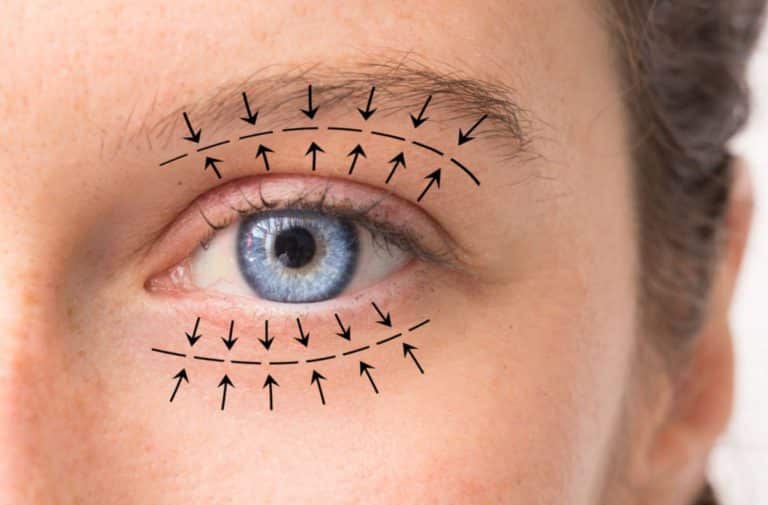
What Is Blepharoplasty Eyelid Surgery?
As we age, we notice changes in our faces, and eyelids are no exception to this rule. Drooping eyelids are a common cosmetic problem, which
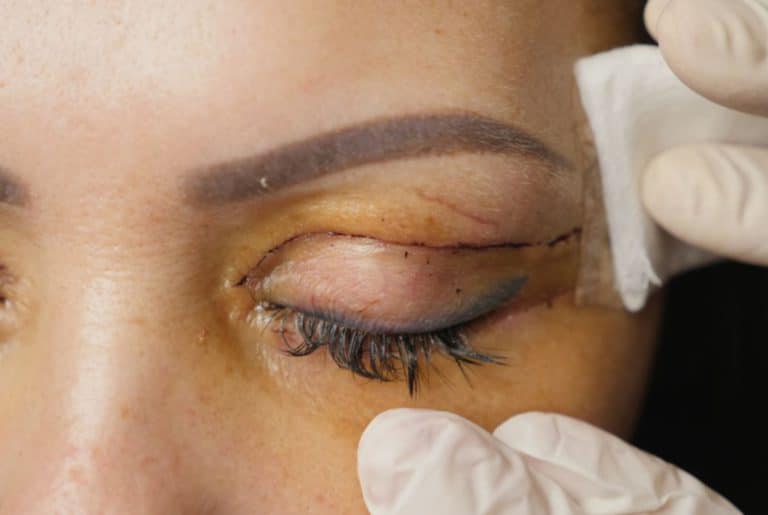
How to Remove Eyelid Surgery Scar
If you’re considering getting a blepharoplasty, you should know a few things about this procedure. Although scarring is nature’s way of healing your body, you

Best Scar Cream After Eyelid Surgery
For those with droopy or saggy upper or lower eyelids, eyelid surgery can be a great choice. However, as with any other type of surgical

What is a Septoplasty with Rhinoplasty?
According to a 2021 study published on NCBI, blockage or obstruction in the nose and sinus cavity can lead to complications like snoring, sleep-disordered breathing, and

How to Sleep After Rhinoplasty Surgery
There’s nothing better for your body following rhinoplasty surgery than getting some rest. This may seem straightforward, but getting a good night’s sleep may be
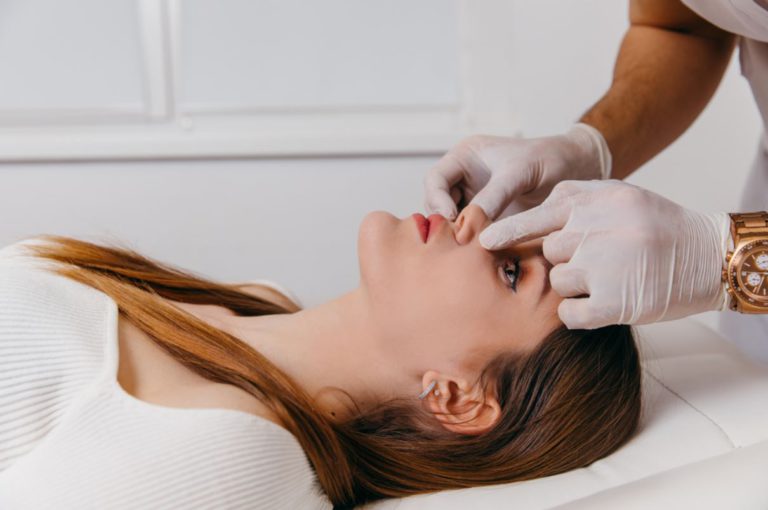
What is an open rhinoplasty scar?
Open rhinoplasty refers to a surgical technique in which the incisions for accessing the nose are made externally, usually on the columella (the strip of

Hispanic Wide Nose Rhinoplasty: All You Need to Know
Wondering if rhinoplasty is right for you as a Hispanic person? Want a nose job for your Latinx wide nose? Hispanic rhinoplasties are often different

Piggy Nose after Rhinoplasty: All You Need to Know
Do you have a piggy nose after rhinoplasty? You went in for a nose job with a great plastic surgeon. But when you get home

Uneven Nostrils After Rhinoplasty: All You Need to Know
Worried about uneven nostrils after rhinoplasty? Want to fix your nostril asymmetry after a nose job? Wondering how long your nostrils will be uneven after
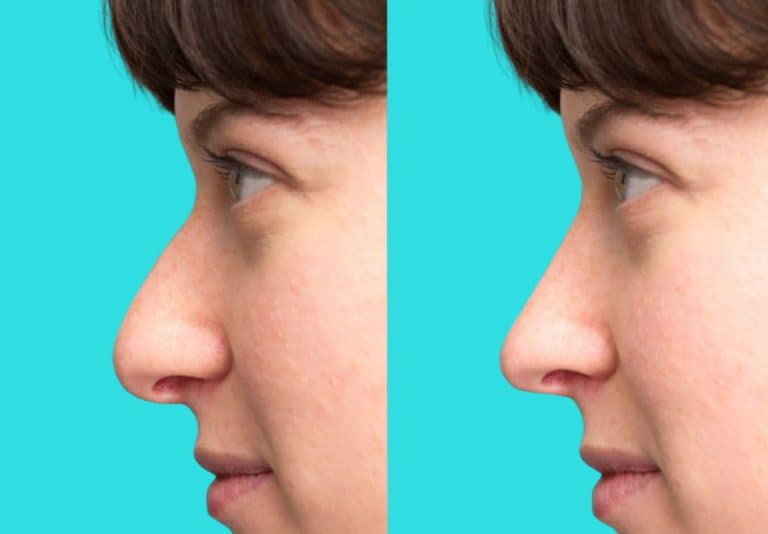
Thick Skin Rhinoplasty
Harvard Health reports that over 220,000 people undergo rhinoplasty procedures. A 2015 research study published in Aesthetic Surgery Journal highlights that more than 83% of
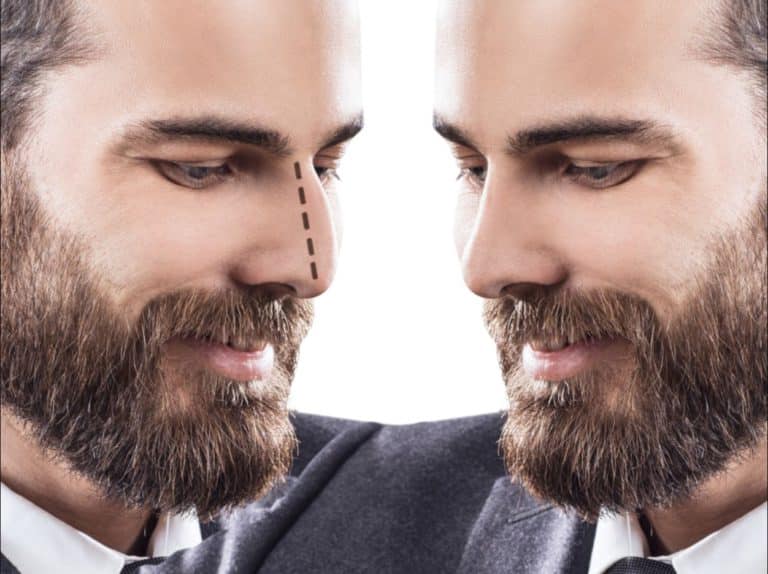
Rhinoplasty for Deviated Septum: All You Need to Know
A deviated septum is where the wall of cartilage and bone (septum) that separates your nasal passages is crooked. Some people have a deviated septum
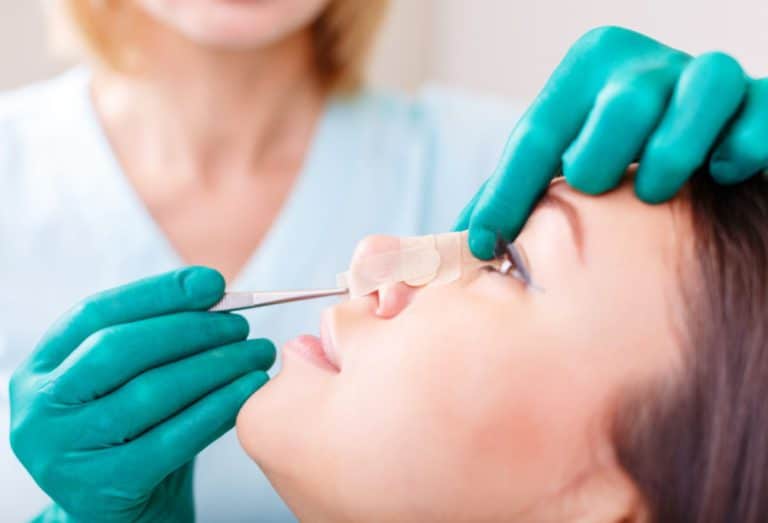
Scar Tissue Inside the Nose after Rhinoplasty: All You Need to Know
Are you getting ready for your rhinoplasty? If you’re wondering if you’ll have scar tissue inside your nose after rhinoplasty, you’re not alone. Knowing about

Does Rhinoplasty Hurt?
Rhinoplasty is a cosmetic surgery procedure that can be performed to improve the appearance of your nose. It involves reshaping and improving the size, shape,

Bulbous Nose Rhinoplasty
Bulbous nose rhinoplasty is a type of cosmetic surgery that aims to reduce the size or reshape the tip of the nose. A bulbous nose
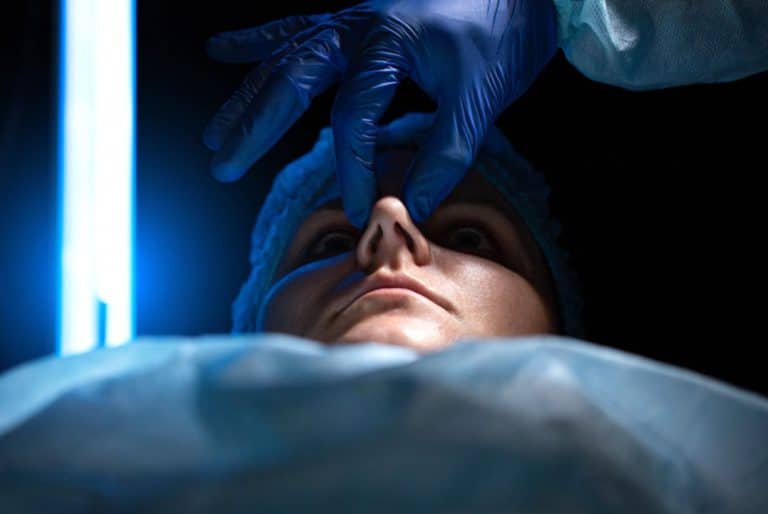
Septoplasty vs Rhinoplasty
In today’s world, there are a dizzying variety of cosmetic treatments available to suit the needs of virtually every patient. So to find the right

Crooked nose after rhinoplasty: All you need to know
Rhinoplasty is an elective cosmetic surgery performed to reshape a person’s nose, usually to correct a crooked or misshapen nose. The procedure can also improve
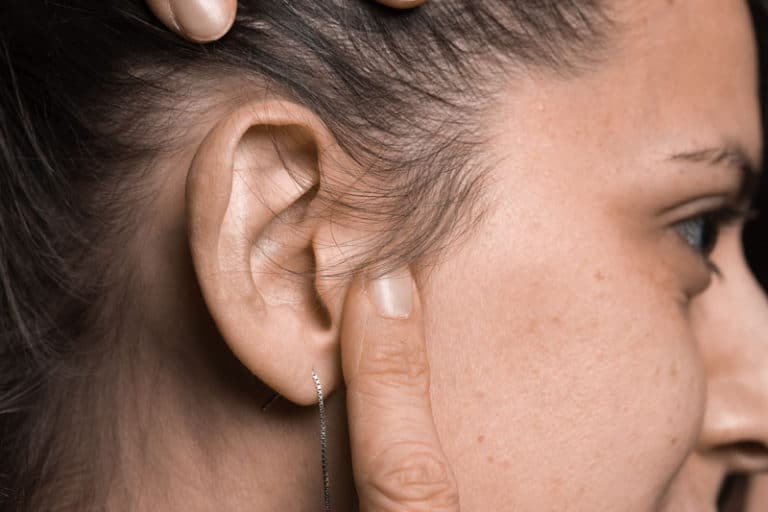
Can my Earlobe be repaired?
Can my Earlobe be repaired? The answer is almost definitely yes. We’re going to go into a little bit more detail than that and discuss

Why Do I Look Angry ALL The Time?
Why do I look angry all the time? Part 1 First, let’s assume that it’s not because you are angry all the time, and if
Meet Your Plastic Surgeon
Call Us, Write Us, or Knock on Our Door
Contact Us
Getting in touch with us is easy. Leave us your information and we will contact you as soon as possible. You can call us with any questions or inquiries (786) 347-9140
.
- Monday - Friday: 9AM - 6PM
- Saturday - Sunday: Closed
